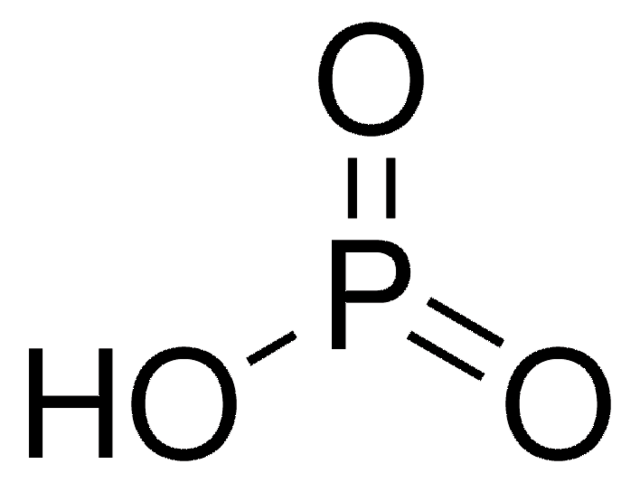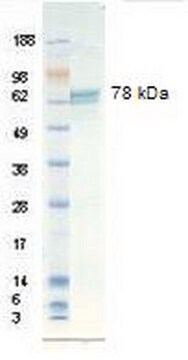239275
meta-Phosphoric acid
ACS reagent, chips, 33.5-36.5%
Synonym(s):
Metaphosphoric acid
About This Item
Recommended Products
grade
ACS reagent
form
chips
contains
57.0-63.0% sodium phosphite as stabilizer
concentration
33.5-36.5%
density
2 g/cm3
anion traces
MnO4- reducers: ≤0.02%
chloride (Cl-): ≤0.001%
nitrate (NO3-): ≤0.001%
sulfate (SO42-): ≤0.005%
cation traces
As: ≤1 ppm
Fe: ≤0.005%
heavy metals: ≤0.005% (by ICP)
SMILES string
OP(=O)=O
InChI
1S/HO3P/c1-4(2)3/h(H,1,2,3)
InChI key
UEZVMMHDMIWARA-UHFFFAOYSA-N
Looking for similar products? Visit Product Comparison Guide
General description
Application
- A catalyst in combination with InCl3 to synthesize 1,8-dioxooctahydroxanthene derivatives by the reaction of cyclic β-diketones and aldehydes.
- A phosphate precursor to synthesize antimony phosphate (SbPO4) by reacting with antimony metal at high temperatures.
Signal Word
Danger
Hazard Statements
Precautionary Statements
Hazard Classifications
Eye Dam. 1 - Skin Corr. 1
Storage Class Code
8B - Non-combustible corrosive hazardous materials
WGK
WGK 3
Flash Point(F)
Not applicable
Flash Point(C)
Not applicable
Choose from one of the most recent versions:
Already Own This Product?
Find documentation for the products that you have recently purchased in the Document Library.
Customers Also Viewed
Our team of scientists has experience in all areas of research including Life Science, Material Science, Chemical Synthesis, Chromatography, Analytical and many others.
Contact Technical Service







